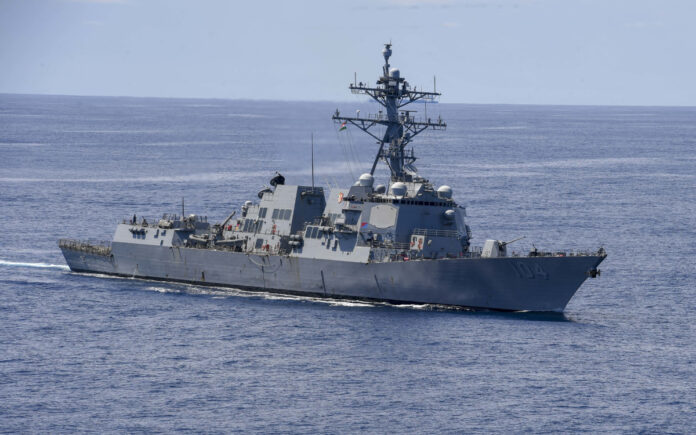Washington: The US military has bolstered its presence near Alaska, deploying the USS Sterett destroyer and Army units equipped with long-range missile systems in response to increasing Russian and Chinese military activity in the region.
This move follows Russian naval operations near the Alaskan coast. The USS Sterett destroyer was dispatched, and Army troops were stationed on a remote Alaskan island, Politico reported. Fighter squadrons and other aircraft in Alaska have also been placed on heightened alert.
North American Aerospace Defense Command (NORAD) has reported a surge in Russian air operations near Alaskan airspace over the past month. Meanwhile, Russian and Chinese warships conducted joint exercises across the Pacific near Japan, escalating concerns in Washington.
Russia’s military activities in the Indo-Pacific and Arctic regions, in collaboration with China, reflect the deepening ties between the two nations, as both face growing isolation from the international community. Moscow’s ongoing war in Ukraine has strained its alliances in Europe, pushing it closer to Beijing.
Russian Forces Increase Military Exercises
Russian Foreign Minister Sergey Lavrov recently warned that Russia is “fully ready” for potential conflict with NATO in the Arctic. Lavrov’s comments, aired during a Russian documentary series and reported by state media, underscore the rising tensions.
“We see NATO stepping up drills related to possible crises in the Arctic,” Lavrov stated. “Our country is fully ready to defend its interests militarily, politically, and with advanced defense technologies.”
The Arctic is a strategic region shared by eight nations, including the US, Canada, and several NATO members. Lavrov further emphasized that non-Arctic nations like China and India also have interests in the area.
Sen. Dan Sullivan (R-Alaska) voiced concerns about the increasing military activities, highlighting the growing frequency of joint Russian and Chinese operations. He urged the expansion of military infrastructure in Alaska to address the escalating security challenges.
“The tempo has gone way up,” said Sullivan, a member of the Senate Armed Services Committee. “They’re clearly escalatory.”
In July, NORAD intercepted Russian and Chinese bombers flying just 200 miles from the Alaskan coast, marking the first time both nations’ aircraft were intercepted while operating together.
Coordinated US Military Response
The recent US military deployments come as Russian forces continue to expand their presence near Alaska. On September 15, the US Coast Guard cutter Stratton detected four Russian navy vessels, including submarines and frigates, 57 miles northwest of Point Hope, Alaska. Although these vessels remained in international waters, they navigated approximately 30 miles inside the US Exclusive Economic Zone.
In a planned exercise, the US Army’s 11th Airborne Division, along with units from the 1st and 3rd Multi-Domain Task Forces, deployed to Shemya in the Aleutian Islands. The units brought radars and a High Mobility Artillery Rocket System (HIMARS) to enhance regional defense capabilities. The USS Sterett, homeported in San Diego, recently docked at Dutch Harbor in the Aleutians after completing patrols in the Bering Sea.
Also Read | Press Freedom Under Threat: Israel Closes Al Jazeera’s West Bank Bureau for 45 Days
US military officials are coordinating closely with NATO allies and Canada to share intelligence and respond to Russian and Chinese activities. Senate Armed Services Chair Jack Reed (D-RI) suggested that Russia’s increased military presence near Alaska may be a reaction to US support for Ukraine in its conflict with Russia.
On September 11, US F-16 jets intercepted two Russian Tu-142 reconnaissance aircraft entering the Alaska Air Defense Identification Zone. NORAD tracked additional Russian aircraft in the following days, further highlighting the rising tensions in the region.



